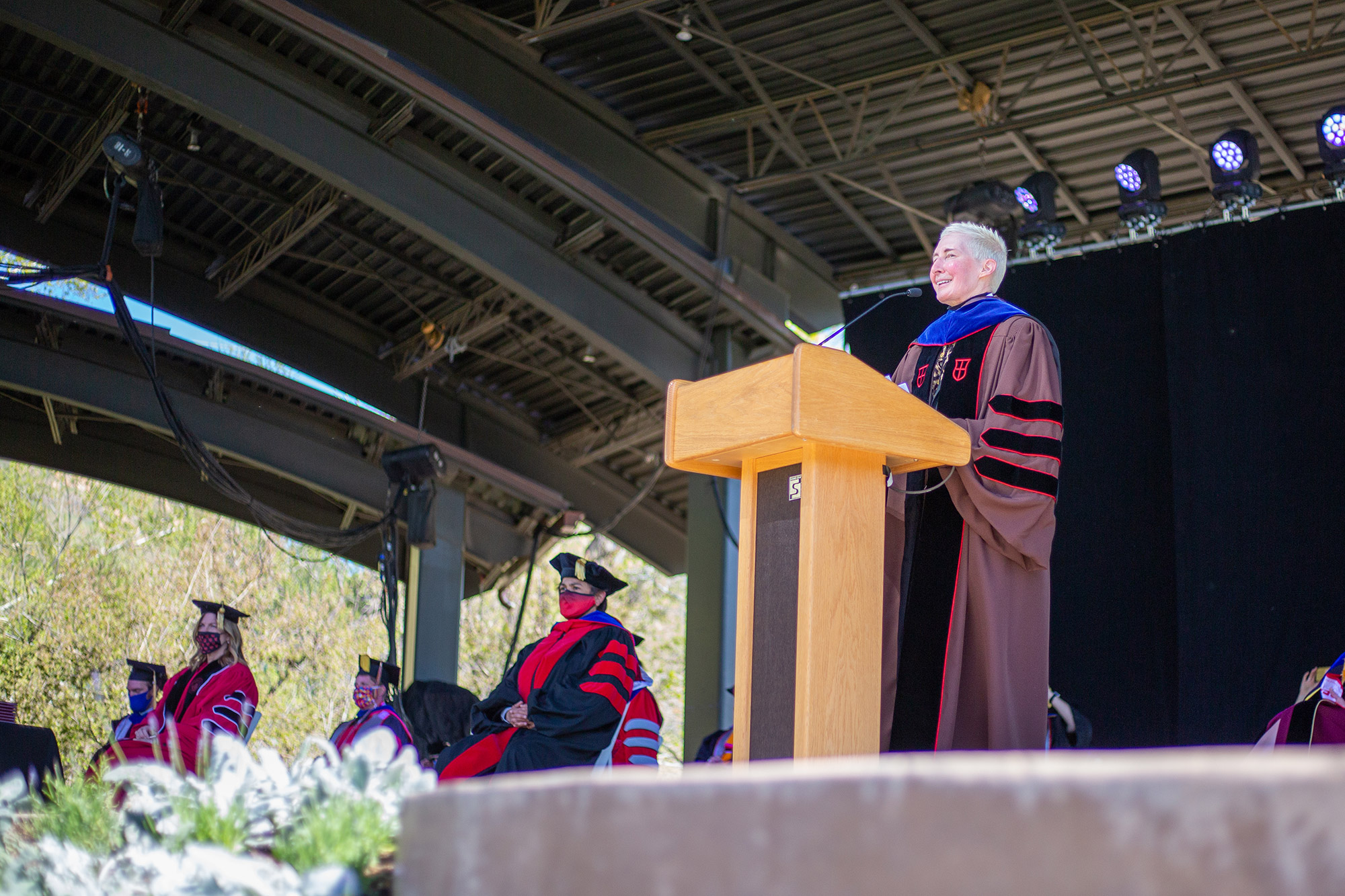
Transcript
Welcome (truly, welcome!) each and every one of you. It’s amazing to be in your bodily company.
We’re thrilled that you’re here.
Who are we that are thrilled? What is this School for Cultural and Social Transformation? (Anyone here may still be asking that—as the School is about to turn five years old.) Well, I have been saying, and I still believe it:
If you take the coolest dance troupe, wed it to a protest, link it to a book club that reads the hippest books, and make it sing with fiery joy—a joy that breaks barriers, confronts institutions, soothes wounds, cracks jokes, dresses rad, and calls things what they are—you have TRANSFORM: the School for Cultural and Social Transformation. It’s as if galactic performer Beyoncé and political leader Cesar Chavez and race/sex comedian Margaret Cho and trans-disability theorist Eli Clare and indigenous lands activist LaDonna Brave Bull Allard with immigration activist Marisa Franco and author Oscar Wilde all got together—and had a brainchild. We are it.
And together we gether. (Now you might be saying: Yikes, the dean misspoke. She meant to say “gather” but instead said “gether.”) No, I mean it. “Gether” is a word I wish to coin. I want it as a verb. “To gether” shall mean: “to sense and acknowledge often unperceived gatherings.” (I’m sick of the phrase “we’re in this together.” It’s a throwaway platitude. Togetherness is not yet earned in many settings. I want the verb “to gether” to carry true edge.)
There’s something we say, whenever we gather, so as to gether Indigenous gatherings. Listen as I share the University of Utah’s land acknowledgment, which needs to be a living, moving gethering on which we all will act. We as a University state:
“Given that the Salt Lake Valley has always been a gathering place for Indigenous peoples, we acknowledge that this land, which is named for the Ute Tribe, is the traditional and ancestral homelands of the Shoshone, Paiute, Goshute, and Ute Tribes and is a crossroad for Indigenous peoples.”
I give a shortened version so we really will receive it: this has always been the place of Indigenous gathering—and it is a crossroad, at this very moment. What would it mean to gether this point? Here’s one suggestion: join, or at least gain understanding of, Land Back! initiatives. (Professor Charles Sepulveda, Professor Thomas Swensen, are experts in our midst. Read their work.) This would be one powerful way to sense and acknowledge—and act on!—these often unperceived gatherings on this land.
But unperceived by whom? How can such powerful, world-shaping gatherings go unnoticed by anyone standing on this exact land? Well, how could anyone say last summer, “I just didn’t realize what Black people go through, living in this country”? Think of what it took (!)—what had to be seen (!)—to get a mass of people in this country to notice: it took a murder, caught on camera by a steady young woman, her one phone holding all that pain, so as to return it to George Floyd’s family and the nation at large. (And, on other fronts, it took #MeToo flowing into #SayHerName; it took spa deaths; kids in cages; trans kids banned from kindergarten sports.) Our country’s ability not to gether—not to perceive what has long been gathering—is the greatest shock. And there’s still the tendency to think that “acknowledgment” doesn’t have to touch me.
Which leads me to the virus….What did it reveal? It lit up all the pathways to and from each other. Not that we could see them. We couldn’t see the virus entering someone’s body. But we knew profoundly that even glancing contact with another body could dramatically alter our fate or—through us—someone else’s fate.
Imagine if we could “contact trace” the effects of racist or sexist or queer-phobic acts against one body in relation to another. Imagine if you could really grasp how hate—or embrace!—shown toward someone you momentarily encounter is affecting you—or passing through you to affect another. The virus has revealed how we’re wildly webbed with each other’s bodies. (Health policies and the lowly mask acknowledge this webbing.) The space between us is a mystical, material place of gathering, where we are not solely ourselves. So much so that even our own deepest emotions are gathered by others and returned to us.
What do I mean? Here’s a line from novelist Marguerite Duras: “Inside you there are sobs you can’t explain. They linger on the brink of you, as if they were outside. They can’t reach you and be wept.” I began to grasp this line one year ago yesterday when my father died COVID-positive in the hospital. Like so many other people in this country, I could not be with him, nor could my mother, and I couldn’t be with her. People who were not my bio-family stood at the brink of me, gathering my sobs which I couldn’t fully fathom. It was like having someone hold my heart so it could go back inside me.
Let me end by saying: Like you, our highly impressive students, we are devoted to learning to gether: to sense and acknowledge often unperceived gatherings: on this land, in our skins, through our sex and our genderings. Entire systems, as we’ve together studied, sit in that strange space between us. They sit on the little ant-like words that carry systems and powerfully confound us: “man,” “woman,” “Black,” “white,” “Latinx,” “queer,” “trans,” “Pacific Islander,” “Indigenous,” and “Asian American”—you name it.
We will spend our lives learning to gather all that must be returned to each other—differentially, and with all due acknowledgment. Land Back! is one powerful example: study it, open it, see what it might mean.
And turn this dynamic strongly toward the positive. Our dear students, let those of us outside of you, at your brink, be part of returning what-you’ve-gathered-here to you.
We literally gether in your name.

One thought on “To Gether”